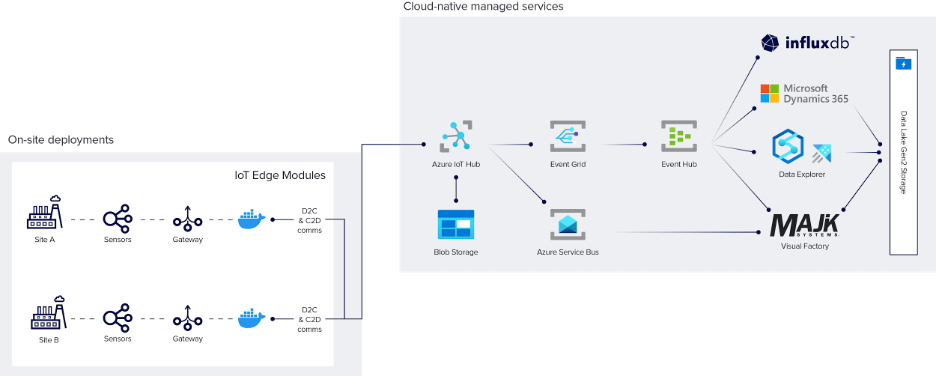Transition from Preventive to Predictive Maintenance Using Time Series Data with MAJiK Visual Factory and InfluxDB | SPONSORED
MAJiK Systems creates software that helps manufacturing and industrial engineering companies improve their factory operations using data-driven manufacturing methods. The company designs a full suite of Visual Factory tools that use data from the machines themselves to power AI-driven insights.
The challenge at hand
MAJiK Systems is no newcomer when it comes to building visual manufacturing tools that optimize factory operations. But the next step in optimization requires factory maintenance practices to move from routine preventive to predictive maintenance. Users need time series data to make that transition. This presents complicated challenges. The industrial computers controlling the machines themselves, programmable logic controllers (PLCs), capture time series process data such as temperature, pressure, vibration, and more. The challenge lies in securely transferring this data from PLCs, which traditionally lack internet connectivity to the cloud-based predictive modeling solutions.
Another challenge was what to do with the data when it got to the cloud. Training these advanced analytics models requires data. A lot of data. Just one model can require millions of individual data points. MAJiK needed something that could handle the vast amount of data needed to feed the advanced statistical analysis, machine learning (ML), and artificial intelligence (AI) tools used for predictive analytics. Recognizing these challenges, MAJiK Systems turned to InfluxDB.
The solution
With connectivity solved by the development of MAJiK’s adaptable edge-to-cloud gateway which securely sends PLC data to the cloud, their focus turned to managing the volume of time series data required for predictive analytics. The solution included supplementing every Visual Factory system with an instance of InfluxDB. The edge-to-cloud gateway is a hardware/software solution that bridges the gap between PLCs and the cloud. It comprises MAJiK’s proprietary IIoT Connect software, operating on an industrial PC within the plant. IIoT Connect safely captures data from PLCs, supervisory control and data acquisition (SCADA) systems, human-machine interfaces (HMIs), and even legacy data historians.

Microsoft Azure IoT Edge and Azure IoT Hub enhance the data transport capabilities of MAJiK’s Visual Factory systems. These Azure services send data from the edge to the cloud through an encrypted connection, ensuring secure data transfer. Once the data reaches the cloud, Azure’s Event Grid, Event Hub, and Service Bus services manage different aspects of data transport.
InfluxDB plays a crucial role in observability and training of machine learning models. Given the high volume of data needed for training, this process takes place in the cloud.
As soon as a model training is successful, the Microsoft cloud ecosystem sends the model back down to the edge via a containerized application. There, it works against real-time data in the plant.
Building the workflow
IIoT Connect guides the user through setting up a connection to virtually any PLC or factory system and the workflow within the cloud. Configuring IIoT Connect for a new data source involves building the workflow using a drag-and-drop UI built on top of open-source Node-RED. MAJiK Visual Factory includes both Node-RED and MAJiK Systems proprietary nodes.
Results
Integrating InfluxDB into the MAJiK Systems ecosystem contributed significantly to the development of MAJiK’s AI-driven platform. This platform uses contextualized data from IIoT sources to continuously build models around normal operational performance, optimizing overall equipment effectiveness and industrial operations. Customers can now make operational changes and understand their financial impacts.
Drilling into process data provides customers with the opportunity to shift goals and targets. On average, MAJiK customers see a 35 – 45% reduction in downtime and a 7 – 10% reduction in waste.
To learn more about MAJiK Visual Factory and InfluxDB, read the full case study here.
Originally this article was published here.



